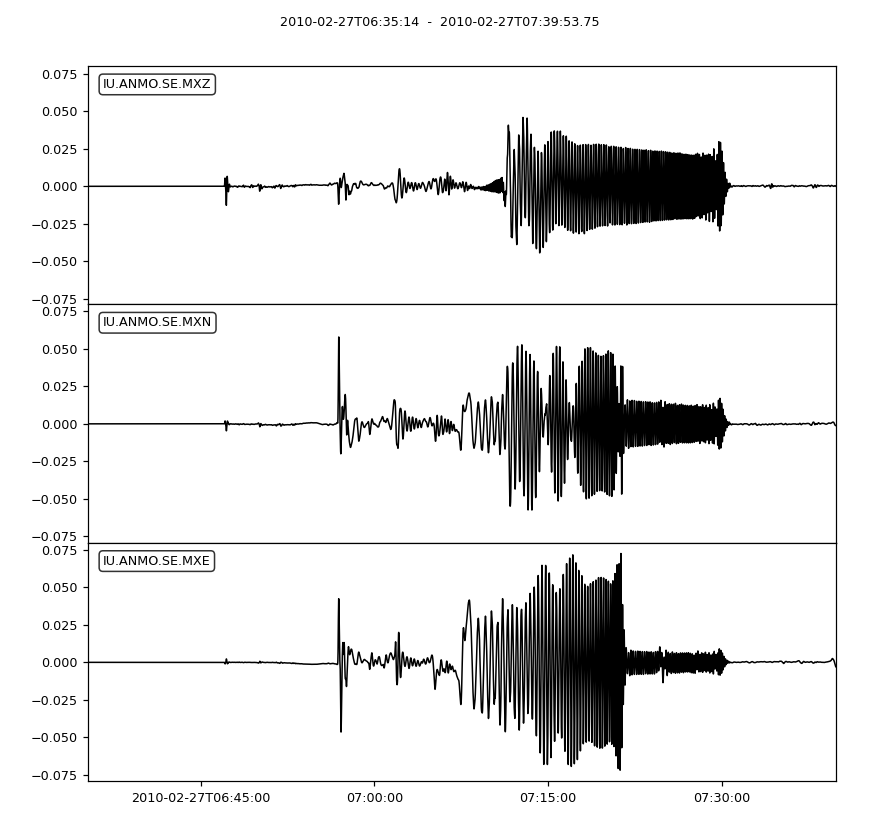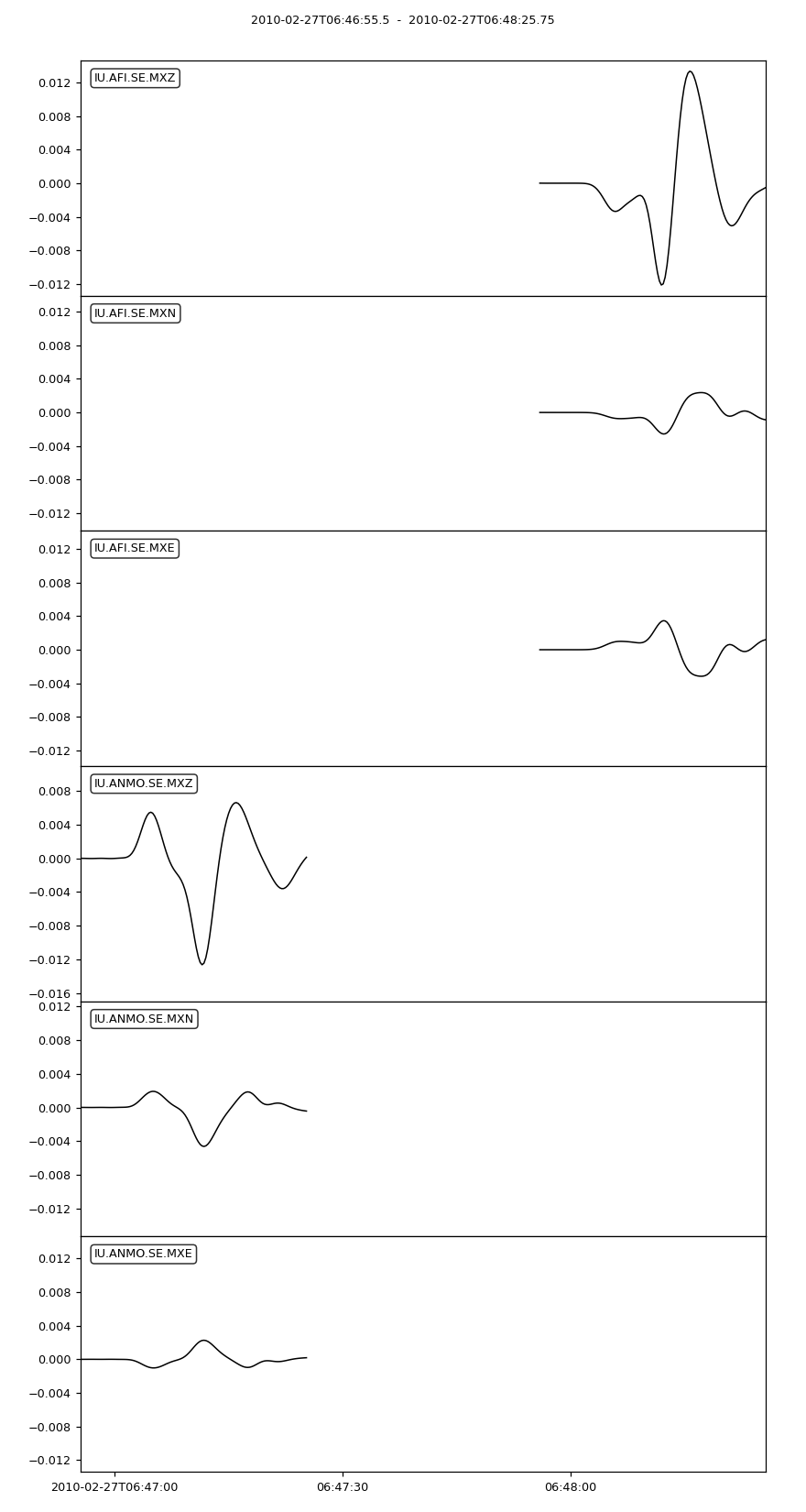obspy.clients.syngine - IRIS Syngine client for ObsPy
This module offers methods to download from the IRIS syngine service (https://ds.iris.edu/ds/products/syngine/). The service is able to generate fully three dimensional synthetics through various 1D Earth models with arbitrary source-receiver geometries and source mechanisms.
- copyright:
The ObsPy Development Team (devs@obspy.org)
- license:
GNU Lesser General Public License, Version 3 (https://www.gnu.org/copyleft/lesser.html)
Basic Usage
First initialize a client object.
>>> from obspy.clients.syngine import Client
>>> client = Client()
Then request some data.
>>> st = client.get_waveforms(model="ak135f_5s", network="IU", station="ANMO",
... eventid="GCMT:C201002270634A")
>>> print(st)
3 Trace(s) in Stream:
IU.ANMO.SE.MXZ | 2010-02-27T06:35:14... - ... | 4.0 Hz, 15520 samples
IU.ANMO.SE.MXN | 2010-02-27T06:35:14... - ... | 4.0 Hz, 15520 samples
IU.ANMO.SE.MXE | 2010-02-27T06:35:14... - ... | 4.0 Hz, 15520 samples
>>> st.plot()
(Source code, png)

The available parameters are explained in detail in the
get_waveforms() method and on
the Syngine website.
The queries are quite flexible. The following uses a station name wildcard and only requests data around the P arrival. Please be a bit careful as one can potentially download a lot of data with a single request.
>>> st = client.get_waveforms(model="ak135f_5s", network="IU", station="AN*",
... eventid="GCMT:C201002270634A",
... starttime="P-10", endtime="P+20")
>>> st.plot()
(Source code, png)

Bulk Requests
It is also possible to send requests for multiple user-defined stations. See
the get_waveforms_bulk() method
for details. This example specifies a bunch of receiver coordinates and
requests seismograms for all of these.
>>> bulk = [{"latitude": 10.1, "longitude": 12.2, "stationcode": "AA"},
... {"latitude": 14.5, "longitude": 10.0, "stationcode": "BB"}]
>>> st = client.get_waveforms_bulk(
... model="ak135f_5s", eventid="GCMT:C201002270634A",
... bulk=bulk, starttime="P-10", endtime="P+20")
>>> print(st)
6 Trace(s) in Stream:
XX.AA.SE.MXZ | 2010-02-27T06:48:11... - ... | 4.0 Hz, 120 samples
XX.AA.SE.MXN | 2010-02-27T06:48:11... - ... | 4.0 Hz, 120 samples
XX.AA.SE.MXE | 2010-02-27T06:48:11... - ... | 4.0 Hz, 120 samples
XX.BB.SE.MXZ | 2010-02-27T06:48:15... - ... | 4.0 Hz, 120 samples
XX.BB.SE.MXN | 2010-02-27T06:48:15... - ... | 4.0 Hz, 120 samples
XX.BB.SE.MXE | 2010-02-27T06:48:15... - ... | 4.0 Hz, 120 samples
Other Useful Methods
Use the get_available_models()
method for a list of all available methods including some meta-information.
>>> client.get_available_models()
{'ak135f_1s': {'components': 'vertical only',
'default_components': 'Z',
'default_dt': '0.05',
'description': 'ak135 with density & Q of Montagner & Kennet(1996)',
'length': 1815.00690721715,
'max_event_depth': 750000,
'max_period': '~100',
'max_sampling_period': '0.255383',
'min_period': 1.04999995231628},
'ak135f_2s': ...
...
}
The get_model_info()
method should be used to retrieve information about a specific model.
>>> from obspy.clients.syngine import Client
>>> c = Client()
>>> db_info = c.get_model_info(model_name="ak135f_5s")
>>> print(db_info.period)
5.125
Classes & Functions
Client for the IRIS Syngine service. |
Modules
ObsPy client for the IRIS Syngine service. |